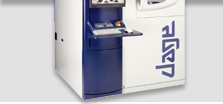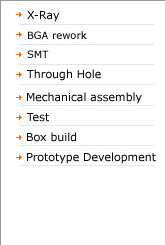








![]()



Leading the Way to Lead-Free
The conversion to lead-free manufacturing is a complicated process that requires co-operation between customer, manufacturer and material supplier. Each is responsible for their part in ensuring that the end product is a reliable assembly. As manufacturer, we are studying the existing lead-free processes to determine which will be the most suitable for our customer base. There is still no clear frontrunner in the race to replace the standard Sn63 solder (contains 63% tin and approximately 37% lead). Alternatives need to be put to the test before any one can emerge as the leader. Some manufacturers may claim to already be lead-free, but take a closer look at what that means. Have they merely swapped the traditional lead-based solder for a lead-free alloy in their processes, or have they actually engineered and tested their new procedures? Also, it is doubtful if they are building with lead-free components, so new issues may arise as the conversion continues.
Lead-free solders have different properties than traditional lead-based solders. They melt at higher temperatures and do not flow as smoothly. Higher temperatures equate to higher energy usage and energy costs. Solder defects may increase, requiring more rework. Assembly costs will rise and the solder joints in the final product will not look as smooth as they did in previous lead-based assemblies.
Steps you’ll need to take in the transition to lead-free:
• Consult with a design engineer knowledgeable in lead-free technology to assess the unique steps you’ll need to take to convert your product to lead-free. Since some re-engineering may be necessary, this may be a good time to update older designs.
• PCBs contain lead in their construction and you will need to work with the manufacturer to convert to lead-free materials.
• Conventional components contain lead and will need to be switched to lead-free equivalents.
• Consider using our turnkey services so you won’t have to worry about locating lead-free parts and maintaining the extra inventory. Although we can’t convert your bills of material over to lead-free equivalents, we can help you source the parts that your engineer specifies for your lead-free design.
• Work on your tracking and paperwork. Shipments to European Community nations will need to have documents certifying they’re lead-free. If questions come up you’ll need to be able to verify the lead-free status of components.
• Stay abreast of the latest news on lead-free. We’ll be publishing the latest in each newsletter and you can visit the links listed on our website
• Even if you’re not going lead-free: You should check with the manufacturers of the components you use to make sure the parts won’t become obsolete as they are replaced with lead-free versions.
Vicki Palmer
Schippers & Crew, Inc.

![]()
![]()